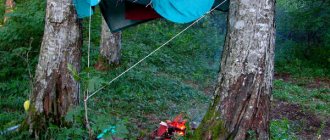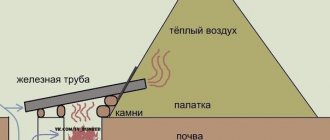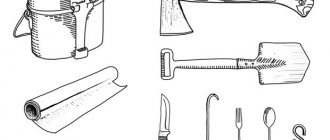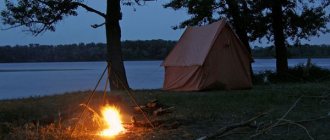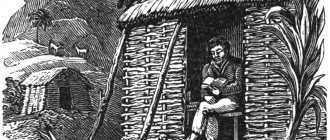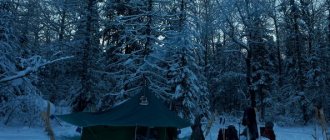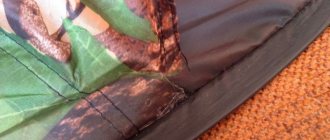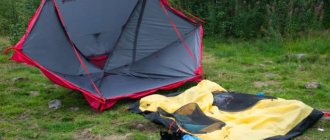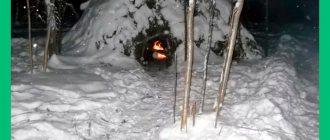Store/auction/FPR/ donate
/ services / RSS / print / login
[October 16, 2012 | October 17, 2012 | October 18, 2012]
I would like to share with readers some useful tips for staying in nature. Let me start with the fact that now a lot of people are interested in winter overnight trips to the forest. I also had an extremely negative experience when I had to walk through the forest at one in the morning to warm up two thugs who had watched enough films on YouTube about how Marines in America undergo training and prepare to survive in harsh climatic conditions.
If you have seen enough of these films, then I want to make a couple of corrections and instructions. First, Marines go through a very long theoretical course on how to survive in harsh environments. It seems that the training period is three months, during which a lot of nuances and subtleties are explained. Secondly, cadets undergo a series of exams, after which the issue of admission to field tests is decided. Thirdly, before leaving the recruits alone with nature, the mentor shows them everything that they will need to do on their own. Fourthly, pay attention to the equipment of the people you see on the screen. The cadets have fleece and Polartek clothing, special multi-layer extreme sleeping bags, a full backpack of uniforms and means for survival in extreme situations. But when you look at the world from a more sober point of view, then think about whether you have similar equipment and take a little more sober look at your strength, knowledge and experience in conducting extreme overnight trips.
First, find someone who will help you spend your first night in a winter forest in practice. He will equip you with everything you need and tell you the rules of behavior in extreme conditions. Let's start with the fact that theoretical knowledge and practical application are different conditions. And let’s end with the fact that it is necessary to purchase sleeping bags and extreme-type tents. People’s objections that one can live in the forest without a tent are not accepted. Especially from those people who have never done this. I know how you can spend the night in the forest in winter with only an awning (or Chinese silver film), but I won’t talk about it, otherwise the next batch of extreme sports enthusiasts will turn into icicles and cause headaches for the Ministry of Emergency Situations employees, who will have to pull frozen bodies out of the forest . I highly do not recommend spending the first night without having the necessary equipment and an experienced mentor with you.
What you need to take from the equipment, in my opinion.
- Winter tent,
- winter sleeping bag,
- thickened travel mat,
- ax and chain saw,
- first aid kit,
- plastic film according to the size of the bottom of the tent,
- spare set of warm underwear,
- spare set of clothes made of fleece or Polartek,
- matches and materials for lighting a fire,
- gasoline burner (be careful with gas),
- secondary equipment,
- led chandelier,
- thermos.
Now let’s go through the list of necessary, and not so necessary, things...
Winter tent
A winter tent has a series of design features that allow you to stay comfortably in it in winter. When purchasing a tent, you can look at the nameplate and it will indicate that this is a four-season tent. Winter-type tents have a series of features, for example, the material of the tent poles will definitely be aluminum, because the plastic will become brittle and quickly break. Another distinctive feature of molasses suitable for wintering is the presence of a snow skirt. The skirt is needed to prevent cold wind from blowing between the awning and the inner tent. The design of the tent should protect against sticking of the awning with the inner tent when a large amount of condensation falls.
Actually, some people convert summer tents into winter ones, but in any case one cannot ignore the fact that the poles of the tent should be made of aluminum, not plastic. The rest can be survived with a double-layer synthetic or single-layer canvas tent.
I also want to remind you that old canvas tents are great for winter camping. They have a couple of undeniable advantages. Firstly, the material is breathable, but at the same time retains heat very well. Secondly, it is not afraid of strong heat and you can even work inside with an open fire. To be honest, I do not recommend heating a tent using an open fire, as this is a very fire hazard, but if you warm yourself with fire, then it is better to use a canvas tent than a synthetic one.
Clothes for spending the night in winter
It is not advisable to spend the night in a tent in winter wearing trousers. Stock up on wool pants and socks (this is an important condition in your case) for an overnight stay. They say that simple pants go well with warmer clothes. To spend the night, it would be a good idea to have a sweater that is hot to wear during the day. You can wear a flannelette shirt under a sweater. We recommend protecting your chest and throat, so take care of yourself and pay attention to your clothing.
Be sure to wear clean and dry underwear. I’ll say right away that wet laundry is a great way to get dry quickly and efficiently. That is why the first thing you should always do when climbing into a tent is to put on dry clothes.
It will not be superfluous to put on a hat at night; your head can get terribly cold at night, and then you will have to treat it. I think you don’t want to wake up with a headache or freeze from the cold.
Wearing more clothes in a tent in winter in the forest is definitely not unnecessary. Let you feel a little hot, not too much. The coldest is always felt in the morning and at dawn, when the body's mobilized forces run out. Your heat loss should be minimal while you sleep. Why should you get up from your own trembling - take care of yourself in the evening, otherwise you will regret it.
All these tips, without heating in a tent, are suitable down to -20 degrees, and even then not for everyone.
Well, the last thing I wanted to note is that you won’t be cold at all when you wake up in the morning, if you use tents with a stove, minimize the unpleasant sensations from the frost. The large umbrella tent UP 5 is suitable for large companies for 5-6 people; in this form, the severe cold can be endured with ease.
This is interesting: How to build a bunker with your own hands
Winter sleeping bag
No matter who advises you, you need to choose a sleeping bag very carefully. And first of all, focus not on the name and coolness of the company, but on the technical characteristics. I don’t believe that sleeping in a Nordway sleeping bag with a comfort temperature of minus thirty-five is less comfortable than sleeping in a Marmot sleeping bag with a comfort temperature of about zero. First of all, you need to look at the characteristics. Winter sleeping bags will most likely be offered to you either from synthetics, something like Goretex, or from swan down. What can I advise here? Down is, of course, cool and warm, but synthetic is preferable. Why am I campaigning for synthetics? Synthetics deteriorate less when wet, do not lose their properties even after very strong wetting, dry quickly, and deteriorate less during transportation. Yes, there are many advantages, in general I am campaigning for synthetics. By the way, if they sell you a sleeping bag with a comfort temperature that goes beyond the limits, then it’s better to go to another store.
What can happen if you choose the wrong sleeping bag? Well, the simplest thing is that if the ambient temperature is in the extreme zone and, God forbid, even outside it, then you will simply die from the cold. If it’s a little colder outside than your comfort temperature, then you’re unlikely to get a good night’s sleep and will constantly wake up from instinctively curling up into a ball (fetal position). If you take the opposite route and sleep in a sleeping bag much warmer than necessary, then you will sweat a lot and your sweat will wet the sleeping bag, and it is very difficult to get rid of sweat in a sleeping bag in the cold.
I would like to warn you in advance against trying to warm up a sleeping bag by “breathing heat” into it. When exhaling, a person creates a lot of moisture, and with a sharp difference between the sleeping bag and the street, all this steam instantly condenses on the inner walls of the sleeping bag. One of the frequent examples is when I warn people, but they ignore it, like, after all, I inhaled it one night and everything was fine. Somehow, after another day's trek, a person unpacked his sleeping bag and was faced with the fact that all of its condensation had frozen into a large piece of ice. And sleeping in an icy sleeping bag is unrealistic. But you can’t take spare warm sleeping bags with you on the road, and it’s almost impossible to dry them in the field.
Overnight in the forest in winter
- It is recommended to eat a hearty meal before leaving. The body will be busy digesting food and will constantly produce heat, you will not freeze and store up energy.
- Buy an anti-barrier cream or use a regular fatty one. It will help create a protective film on the face and prevent frostbite.
- Take sunglasses if you are going to the mountains and when the sun is shining brightly. There is a chance of getting an eye burn. Bring more scarves and clothing and wrap them around your face if you get cold.
- Take aspirin, it thins the blood and prevents the body from freezing longer.
- Do not drink alcohol or smoke cigarettes - this will speed up the freezing of the body.
- If you are planning an overnight trip to the forest in winter, the video will help you visually master the basics of an overnight stay.
Overnight in the winter forest. Video
Overnight in a tent in winter
Tent in the forest. Spending the night in the forest in winter in a tent is a difficult matter. You need to know how to properly spend the night in the forest in winter so as not to freeze and how to choose the right place. If you went on a winter camping trip with tents, then you need to know how to properly organize a winter camp. Choose an area with the least amount of vegetation. It's better to choose a clearing. First clear the clearing of excess debris and begin setting up the camp.
If you are spending the night in a mountainous area, you should also choose a clearing and make sure that you are not in danger of snow or stones falling. Place one or more tents in a semicircle or the letter L , forming a fireplace, this will help to escape from the wind. In the center of the camp you need to create a fire pit. It is better to prepare logs for the fire in advance, before dark.
In winter, it will be quite cold in the tent and you will have to heat it from the inside. There are several ways to heat a tent. If you plan to spend the night in the forest in a tent in winter, video instruction will help you better prepare for this.
In severe frost
Tips for heating a tent in severe frost.
- Using a kerosene lamp or gas lamp. The tent will heat up quickly, but you will need to be careful not to tip it over as you sleep.
- With the help of candles. They are suitable for heating a tent, but their downside is instability.
- Heat stones over a fire, wrap them in thick fabric and place them at the entrance to the tent. Once they cool down, the tent will become cooler, but you won't have to worry about the possibility of a fire while you sleep.
- For more detailed tips on how to survive in severe frost, read our article.
Place a sleeping bag or air mattress with blankets inside the tent.
Overnight in the forest in winter
Spending the night in a winter forest without a tent (video)
Spending the night in the forest in winter without a tent. If you didn’t take a tent, you need to build one from scrap materials. Logs, dry leaves and branches work well. If you have a tarp, construct a shelter or awning using branches and fabric. If you have a sleeping bag, sit near the fire.
Without a sleeping bag, you will have to build a shelter in the snowy forest yourself in winter. Select a small slope and start digging the hole deeper. Make sure there is enough snow on top to prevent the roof from collapsing. When the hole is dug, you should begin to fill the entrance with snow. Light a fire or small fire inside to warm the snow cave from the inside.
Be careful not to let it get too hot. Soon the snow shelter will warm up. The temperature difference between inside and outside will provide strength to the walls.
You will also find the article on how to build a winter shelter useful on our website.
Your task is to ensure that the snow walls do not crack and cover them in time. You can leave the fire smoldering overnight.
With node
Nodya is a good place for such an overnight stay. Spending the night in the forest in winter with a node will keep you from freezing for a long time. Prepare long logs in advance and arrange them in the shape of a node. Create an even flame inside. The advantages of this type of fire are that it smolders slowly and radiates heat. It is better to use pine, fir or eucalyptus logs. You will not have to worry at night that the flame will flare up too much, at the same time, it will not go out, and you will not freeze.
When spending the night like this, you should remember some rules. It is not advisable to sleep for too long. Rest for a few hours, this will be enough to rest. Spending the night in the forest in winter in severe frost is dangerous. Don't forget to move more often. Do not sleep in shoes and thick clothes, this will create inconvenience.
If you are in a flat area and there are no hills for a cave, you need to choose a flat surface and dig the hole down. This type of shelter takes more effort and time, but it can heat just as well. Once you've finished digging the hole, cover the top with leaves and branches or create a wind barrier with snow. You can make a fire inside if space allows.
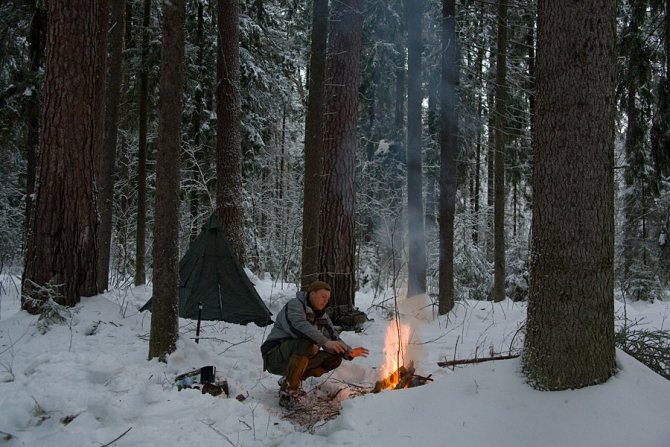
Winter overnight
In mountainous areas, it is better to find a natural shelter, a cave or crevice, and camp there. Be careful when choosing a site and ensure that there is no risk of snow or rocks falling. Do not go too deep into the cave, there may be animals there, it is better to stay close to the entrance. If you have to spend the night in the forest in winter, the video will help you clearly see the process of creating a bivouac.
During a long vacation, do not forget to remove trash after yourself and leave nature clean. In severe frost, do not forget to move actively. If you remember these rules and prepare well for a winter hike in the forest, then you will have a great time.
0
Author of the publication
offline 2 years
Nika
7
I am interested in hiking and traveling, photography and videography. I have been going hiking since childhood. The whole family went and went - sometimes to the sea, then to the river, to the lake, to the forest. There was a time when we spent a whole month in the forest. We lived in tents and cooked over fires. This is probably why I am still drawn to the forest and, in general, to nature. I travel regularly. About three trips a year for 10-15 days and many 2 and 3 day hikes.
Comments: 0Publications: 668Registration: 10/23/2018
Nika Wild Survival
Travel mat
A hiking mat for winter hiking is very important. This is the second layer of protection against the cold. The first layer is the bottom of the tent, which does not warm at all. And so, the rug should be chosen from highly porous synthetics. Something like polyurethane foam. The main thing is that the pores are very tiny, because the larger the pore, the easier it will be to push through with your weight. Personally, I prefer rugs from the Izhevsk plant. They are called “Izhevsk rugs”. As a modern alternative, I can recommend purchasing self-inflating mats. They are made of synthetic porous filler and an airtight shell. The thermal insulating properties of the rug will save you from the cold coming from the ground. A sleeping bag itself cannot cope with the cold coming from the ground.
Equipment for fuel procurement
There are a lot of good dead trees in the forest. They are dry, easy to chop and burn great. Therefore, it is advisable to take a chain saw or an ax on the road. I recommend taking both an ax and a saw. If there is a choice, then only an ax. I have an article about which ax to choose in the equipment section. Based on the bottom line, I can recommend taking an ordinary forest ax with a blade weighing from 600 grams to one kilogram. Why don’t I recommend taking special tourist hatchets? I have a lot of negative experiences with such equipment.
Why do you need a tandem of a saw and an ax? Each item has its own zone of comfortable use. A chain saw is convenient for cutting down thick branches and small trees. In contrast to a chain saw, an ax is convenient for cutting down trees of large and medium diameter. It’s also easy to cut down branches that are at chest level with an axe, the hatchet does this in one movement, but you still need to throw on the saw, cut it down, and then you’ll only get the supply of firewood you need.
Spare linen
Spare linen is extremely necessary even if there is only one overnight stay. It will be very useful if the previous set gets wet from sweat, and it is also simply necessary if suddenly your main clothes get wet from getting into a stream, from a stove, or even from a fire. Laughter is laughter, and clothes in the forest near a fire are not at all immune from flying sparks, which are practically invisible in bright light.
You need to take warm underwear, spare warm socks and something made of warm polar or fleece.
Conclusion
You should not take the information above as a guide or set of rules for spending the night in the winter forest. These are just general recommendations that you should first pay attention to. It is necessary to take into account many other factors: the physical and moral state of the body, terrain features, thickness of snow cover, weather conditions, etc. With a competent approach and sufficient experience, spending the night in the forest during the cold season will bring extremely positive emotions.
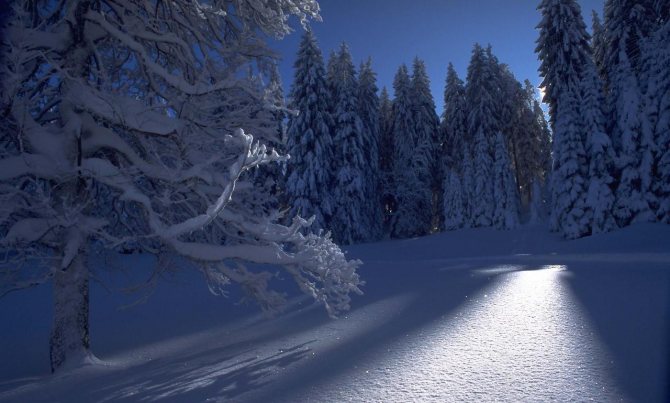
Ignition kit
No matter how you prepare, a spare set of matches never hurts. And pre-prepared fire lighting kits won’t hurt either. To light it, I take matches and some lighter gasoline. Only gasoline must be properly sealed and kept in a separate plastic bag. You can also take lighters on the road, but don’t forget matches. Disadvantages of lighters for the winter period: the flint burns and does not work, gas does not burn at very low temperatures, the piezoelectric element may not ignite very cold gas. It is ideal to take special hunting matches.
I also want to warn against using flint and steel (or rather flint) as the main element of ignition, which are now very actively sold in tourist shops and souvenir shops. You need to know how to use flint, as in commercials and films about wildlife you won’t be able to light a fire. You need to know how to use flint so that it can set fire to what you want.
Burner
For traveling in winter, I recommend purchasing a gasoline burner. Even an ordinary Soviet “Bumblebee” burner will do. Why not gas? Gas has its own problems. Firstly, during operation, the volume of gasoline decreases, and gas continues to take its place. A plastic fuel bottle can be crushed, but alas, a gas cylinder can be crushed. Secondly, and this is the main trump card... gasoline burns even at minus sixty degrees, but gas has a lot of limitations. Gas in ordinary tourist cylinders stops burning at minus ten. But already at zero degrees, gas consumption increases greatly and it burns poorly. Plus, when the gas evaporates, its temperature drops even more, which negatively affects the combustion of the gas. There are special mixtures that burn at low temperatures, but they still do not guarantee high-quality combustion.
It’s even better to use firewood, but you can stock up on it right in the forest, the main thing is to take an ax and a saw.
Tips for preparing for a hike
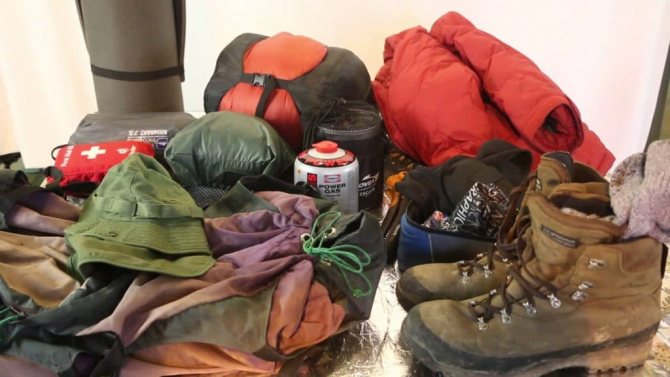
The first thing you need to decide is the duration of the hike and the time of year in which it will be carried out. For people who are just learning the first basics of tourism, it is better to organize a trip in the summer, in a temperate climate, for 2-3 nights, no more. Winter hiking requires good dexterity, so it is best done by experienced tourists in a trusted company.
The most important thing to understand before traveling into the wild is that the lighter the backpack, the more enjoyable the trip. If a person is not used to carrying heavy loads, then it is better for him to get rid of a couple of the least useful things on his back. This very effective rule will help save strength and energy, thereby making walking with a backpack more enjoyable.
For a hike lasting no more than 1 day, a small backpack with a volume of 15-35 liters is enough. If you plan to extend your vacation in the wild over several days, then you need to take a larger backpack, with a volume of at least 55 liters.
Any overnight trip requires having a place to stay overnight. Therefore, we cannot do without a sleeping bag and a tent. This is where it is important to take into account the time of year and the place where the event is planned. For example, in the summer in the southern regions of our country a sleeping bag is not so necessary, since the nights are mostly warm and dry. But an overnight trip to the forest in winter simply obliges you to have a warm sleeping bag with you, otherwise the tourist risks catching a serious cold. A sleeping bag will be useful not only in winter, but also at other times of the year if the air temperature drops below +10°C.
But while you can do without a sleeping bag, you won’t be able to have a comfortable vacation without a tent. It is necessary to protect yourself from wind, precipitation, insects, wild animals and other external influences that can disrupt a comfortable stay in nature.
When choosing a tent, you need to take into account the total number of people in the group that is going on a hike, as well as the resistance of the tent against wind and rain.
It should be of such a size that the whole group of tourists can comfortably sit there. If the group is large, then take several small tents. In addition, you should take with you a karemat - a special mat that combines the function of a mattress and additional insulation. It is simply irreplaceable in situations where you have to sleep on a cold and hard surface. Most often on such trips, such a surface is forest soil. The density and rigidity of the mattress must be selected individually for yourself. The most important thing: you should take into account that its length should be 15-30 cm greater than your height.
Secondary equipment
Here is a very interesting point. Pleasant little things that brighten up problems on the road and make life more enjoyable.
LED chandeliers for illuminating the tent. They operate on a pair of batteries for a very long period. They are not afraid of cold and moisture. Although it would be very practical to use gas lanterns to light your tent in winter, they should only be used in a tent with good ventilation, otherwise you risk not waking up.
To clear the area, you can take a mining shovel or a piece of plastic with a comfortable grip. Sometimes people take cutting boards with them, which they use to dig snow for a platform and a fire, and then they are used for their intended purpose.
Before setting up the tent, I recommend placing a plastic film the size of the bottom of the tent on the snow. It is needed so that after parking you do not have to clean off pieces of ice from the bottom of the tent. But the film has poor adhesion to ice and it is easy to knock it off simply by beating it against a tree.
